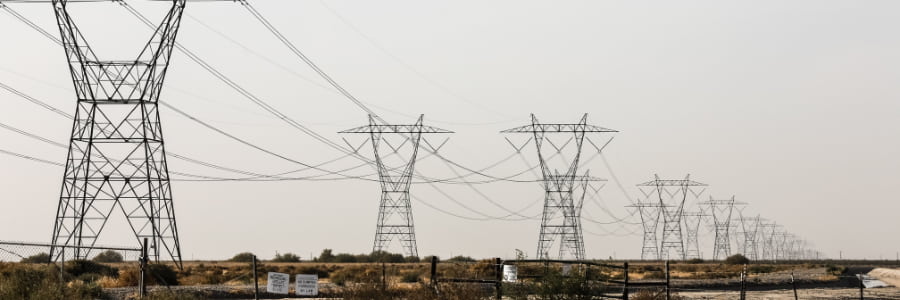Vehicle-to-grid (V2G) technology is a numbers game. Attaching one electric vehicle (EV) with V2G-ability to the grid helps reduce emissions and create new possibilities for grid stability and flexibility for utilities. If you attach 100 V2G-ready vehicles, utilities’ benefits can multiply exponentially.
With increasing climate-related challenges and an ageing energy infrastructure, V2G is set to become a crucial tool. And we are not talking about the distant future.
Today, there are about 150 ongoing V2G projects covering more than 12000 chargers. Major vehicle manufacturers like Nissan have announced large-scale roll-outs of V2G-ready vehicles.
For utilities, V2G offers an opportunity to stabilise the grid during peak demand, integrate renewable energy sources, and provide new revenue streams. This is especially true for EV vehicle fleets. The size and number of the vehicles involved provide large-scale energy and grid flexibility capabilities.
Make no mistake – this is happening now. Industry analysis predicts that 10 to 20 per cent of US fleets will adopt V2G by 2027, with other countries already continuing along the same trajectory. Globally the market for V2G technology is expected to climb to $20 billion by the end of 2031 from $2.78 billion in 2021.
Here are five reasons utilities should prepare for EV fleets today, including some advantages they stand to gain.

V2G technology transforms EVs into mobile energy storage units, allowing them to store electricity and send it back to the grid. They are, in essence, distributed energy resources (DERs). As EV adoption grows, this leads to an equal growth in DER capability that utilities can integrate into virtual power plants (VPPs).
For instance, partnerships in Europe, like the one between Nissan and E.ON, have shown how EVs can support the grid during peak demand by returning energy to the system.
Benefits for Utilities:

Utility-scale flexibility is essential, and a keen eye on grid resilience is key for the transition toward more renewable energy. In this context, V2G EV fleets can act as a reliable and consistent source of energy flexibility. Fleets like school buses or delivery vans—which operate on predictable schedules—can store and return power to the grid during periods of high demand. By delaying or accelerating EV charging with advanced smart charging based on grid needs, utilities can manage demand fluctuations, improving overall system stability.
In this context, it is worth considering that an average US home uses 30 kWh/day. Many standard EVs have 75kWh batteries or larger, so they have the ability to provide local backup power in case of even multi-day outages.
Advantages of utilities:

Energy grids face pressures from changing energy demands and ageing infrastructure. V2G technology offers utilities a way to improve grid reliability by using bidirectional charging to meet peak demands. It also enables them to localise supply and demand in ways that support the existing infrastructure and prevent outages.
Utilities worldwide are looking to upgrade energy systems to meet changing energy demands and dynamics. In this context, bidirectional V2G technology and eV fleets provide a cost-effective alternative that can address demand spikes and add another layer of resilience to the grid, allowing utilities to optimise the use of existing infrastructure.
Utility gains:

Aggregating the energy stored in EV fleets provides a flexible resource that utilities can use in not only their own area of operations. It allows participation in energy markets and creates new revenue streams. This approach supports grid stability and creates a new revenue stream that benefits utilities and EV owners.
These abilities are already being explored. For example, Volkswagen has partnered with several utility companies on a V2G system that feeds stored energy from EV batteries back into the grid. Other potential new revenue streams include frequency regulation, demand response, and energy arbitrage.
Economic benefits for utilities:

Beyond grid stability and new direct revenue streams, V2G solutions can strengthen connections with customers. One example is by deploying V2G in community-based programs to boost energy resilience. For example, Oakland, California, has seen the launch of a V2G initiative where electric school buses support local energy needs and offer an economic boost for the community. This is not the remit of EV fleets, as individuals can see similar benefits.
It should also be noted that the benefits apply to all customers, either directly or indirectly. For example, saving money on energy infrastructure projects can enable utilities to stay more price competitive and, thereby, their ability to attract and retain customers.
Customer benefits for utilities:

The conclusion is that utilities need to act now and integrate V2G fleet technology and solutions into their operations.
As EV adoption grows and regulations shift to require bidirectional capabilities, preparing for V2G today will ensure that utilities are ready to meet future demand, support renewable integration, and leverage new economic opportunities.
Utilities may hesitate due to a lack of a coherent V2G strategy or cost worries. Regarding the latter, several solutions on the market provide a cost-effective, software-based approach to planning, deploying, and operating such solutions, including a DERMS platform.
In regard to strategic actions, utilities may consider the following steps: